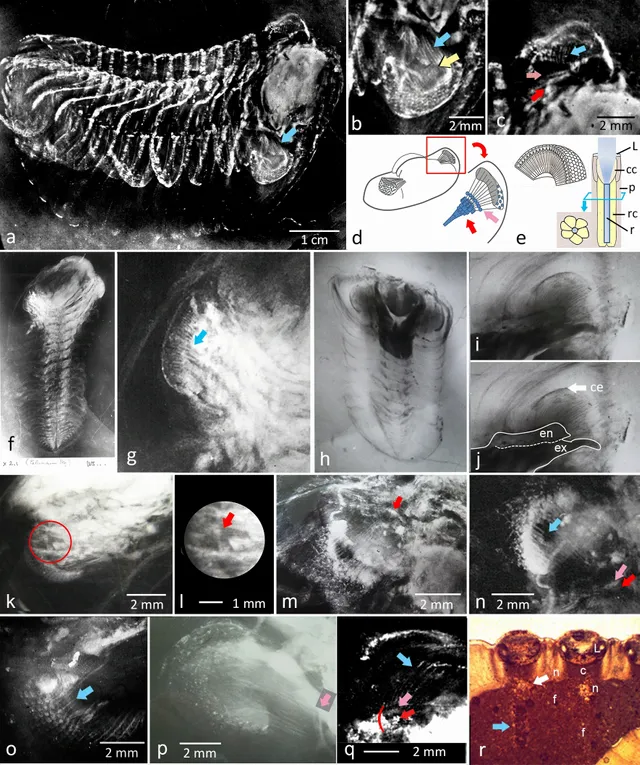
Abstract
Trilobites, extinct arthropods that dominated the faunas of the Palaeozoic, since their appearance c 523 million years ago, were equipped with elaborate compound eyes. While most of them possessed apposition compound eyes (in trilobites called holochroal eyes), comparable to the compound eyes of many diurnal crustaceans and insects living today, trilobites of the suborder Phacopina developed atypical large eyes with wide lenses and wide interspaces in between (schizochroal eyes). Here, we show that these compound eyes are highly sophisticated systems—hyper-compound eyes hiding an individual compound eye below each of the big lenses. Thus, each of the phacopid compound eyes comprises several tens, in cases even hundreds of small compound eye systems composing a single visual surface. We discuss their development, phylogenetic position of this hyper-compound eye, and its neuronal infrastructure. A hyper-compound eye in this form is unique in the animal realm.
It is incredible how this species from 390 million years ago has about 200 lenses in its eyes that undoubtedly gave it a considerable advantage against its predator. This species seems from another world. I will continue investigating this species.

A 390 million-year-old hyper-compound eye in Devonian phacopid trilobites
